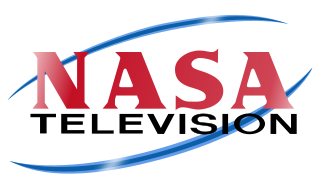Related Research Articles

The Canadian Radio-television and Telecommunications Commission is a public organization in Canada with mandate as a regulatory agency for broadcasting and telecommunications. It was created in 1976 when it took over responsibility for regulating telecommunication carriers. Prior to 1976, it was known as the Canadian Radio and Television Commission, which was established in 1968 by the Parliament of Canada to replace the Board of Broadcast Governors. Its headquarters is located in the Central Building of Les Terrasses de la Chaudière in Gatineau, Quebec.
A television network or television broadcaster is a telecommunications network for distribution of television program content, where a central operation provides programming to many television stations or pay television providers. Until the mid-1980s, television programming in most countries of the world was dominated by a small number of terrestrial networks. Many early television networks evolved from earlier radio networks.

Broadcasting is the distribution of audio or video content to a dispersed audience via any electronic mass communications medium, but typically one using the electromagnetic spectrum, in a one-to-many model. Broadcasting began with AM radio, which came into popular use around 1920 with the spread of vacuum tube radio transmitters and receivers. Before this, all forms of electronic communication were one-to-one, with the message intended for a single recipient. The term broadcasting evolved from its use as the agricultural method of sowing seeds in a field by casting them broadly about. It was later adopted for describing the widespread distribution of information by printed materials or by telegraph. Examples applying it to "one-to-many" radio transmissions of an individual station to multiple listeners appeared as early as 1898.

Digital Video Broadcasting (DVB) is a set of international open standards for digital television. DVB standards are maintained by the DVB Project, an international industry consortium, and are published by a Joint Technical Committee (JTC) of the European Telecommunications Standards Institute (ETSI), European Committee for Electrotechnical Standardization (CENELEC) and European Broadcasting Union (EBU).

Mass media in the United States consist of several types of media: television, radio, cinema, newspapers, magazines, and web sites. The U.S. also has a strong music industry. New York City, Manhattan in particular, and to a lesser extent Los Angeles, are considered the epicenters of U.S. media.

Radio broadcasting is transmission of audio (sound), sometimes with related metadata, by radio waves to radio receivers belonging to a public audience. In terrestrial radio broadcasting the radio waves are broadcast by a land-based radio station, while in satellite radio the radio waves are broadcast by a satellite in Earth orbit. To receive the content the listener must have a broadcast radio receiver (radio). Stations are often affiliated with a radio network which provides content in a common radio format, either in broadcast syndication or simulcast or both. Radio stations broadcast with several different types of modulation: AM radio stations transmit in AM, FM radio stations transmit in FM, which are older analog audio standards, while newer digital radio stations transmit in several digital audio standards: DAB, HD radio, DRM. Television broadcasting is a separate service which also uses radio frequencies to broadcast television (video) signals.
Public broadcasting involves radio, television and other electronic media outlets whose primary mission is public service. Public broadcasters receive funding from diverse sources including license fees, individual contributions, public financing and commercial financing.
Integrated Services Digital Broadcasting is a Japanese broadcasting standard for digital television (DTV) and digital radio.
Digital radio is the use of digital technology to transmit or receive across the radio spectrum. Digital transmission by radio waves includes digital broadcasting, and especially digital audio radio services.

The Cable Public Affairs Channel, better known by its acronym CPAC, is a Canadian specialty channel owned by a consortium that includes among other part-owners Rogers Communications, Shaw Communications, Vidéotron, Cogeco, and Eastlink. The channel is devoted to coverage of public and government affairs, including carrying a full, uninterrupted feed of proceedings of the House of Commons of Canada, with three audio channels, one untreated feed and, with the assistance of interpreters, one in each of the official languages.
American Indian Radio on Satellite or AIROS was a service that transmitted Native American radio programs between producers and radio stations via satellite. It also distributed radio programming directly to listeners via the Internet. Its satellite service ran from 1994 to 2006. It was operated by Native American Public Telecommunications.
Audio description, also referred to as a video description, described video, or more precisely called a visual description, is a form of narration used to provide information surrounding key visual elements in a media work for the benefit of blind and visually impaired consumers. These narrations are typically placed during natural pauses in the audio, and sometimes during dialogue if deemed necessary.
Cumulus Media Networks was an American radio network owned and operated by Cumulus Media. From 2011 until its merger with Westwood One, it controlled many of the radio assets formerly belonging to the American Broadcasting Company (ABC), which was broken up in 2007; Cumulus owned the portion of the network that was purchased by Citadel Broadcasting that year.
This glossary of terms used in broadcasting is a list of definitions of terms and concepts related to both radio and television broadcasting, along with the industry in general.
Bell Media Radio, G.P., operating as iHeartRadio Canada, is the radio broadcasting and music events subsidiary of Canadian media conglomerate Bell Media. The company has its origins in CHUM Limited, which was acquired by CTVglobemedia in 2006. Through subsequent acquisitions, it also subsumed the radio properties of Astral Media in 2013; many of these were former Standard Radio stations that were acquired by Astral in 2007.

AMI-tv is a Canadian, English-language, digital cable specialty channel owned by the non-profit organization Accessible Media. AMI-tv broadcasts a selection of general entertainment programming with accommodations for those who are visually or hearing impaired, with audio descriptions on the primary audio track and closed captioning available across all programming.

AMI is a not-for-profit media company that entertains, informs, and empowers Canadians who are blind or partially sighted. The company operates three broadcast services: AMI-tv and AMI-audio in English and AMI-télé in French. AMI's vision is to establish and support a voice for Canadians with disabilities, representing their interests, concerns, and values through accessible media, reflection, and portrayal.
Koahnic Broadcast Corporation (KBC) is a nonprofit media center that provides Native radio programming through Alaska Native governance and operation. KBC’s radio programming consists of National Native News, Native America Calling, and Indigefi, some of which can be heard nationally through their Native Voice One service. KBC also owns and operates KNBA located in Anchorage, Alaska, the first Native radio station in an urban market, and Rising Indigenous Voices Radio (RIVR), an internet radio station streaming modern Native music.

NASA TV is the television service of the National Aeronautics and Space Administration (NASA). It is broadcast by satellite with a simulcast over the Internet. Local cable television providers across the United States and amateur television repeaters may carry NASA TV at their own discretion, as NASA-created content is considered a work of the U.S. government and is within the public domain. NASA TV is also available via various cable, satellite, and over-the-top media services around the world. The network was formally created in the early 1980s to provide NASA managers and engineers with real-time video of missions. NASA has operated a television service since the beginning of the space program for archival purposes, and in order to provide media outlets with video footage.
AMI-télé is a Canadian, French-language digital cable specialty channel owned by the non-profit organization Accessible Media Inc. (AMI). AMI-télé is a French version of AMI's English-language service AMI-tv, and broadcasts a selection of general entertainment programming with accommodations for those who are visually or hearing impaired, consisting of described video on the primary audio track and closed captioning available across all of its programming. The channel also broadcasts series on accessibility- and disability-related topics.
References
- 1 2 3 Schilling, Vincent (January 9, 2013). "Native American Public Telecommunications Rebrands Itself as Vision Maker Media". Indian Country Today. Archived from the original on January 13, 2013. Retrieved August 3, 2020.
- 1 2 3 4 5 3 Decades (PDF). Native American Public Telecommunications. Retrieved March 29, 2020.
- ↑ Lee, Tanya (Aug 23, 2006). "Just a click away from home". Indian Country Today, Oneida NY.